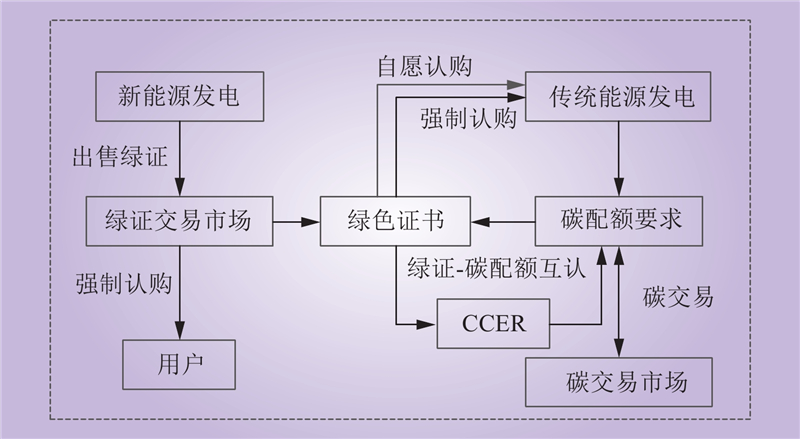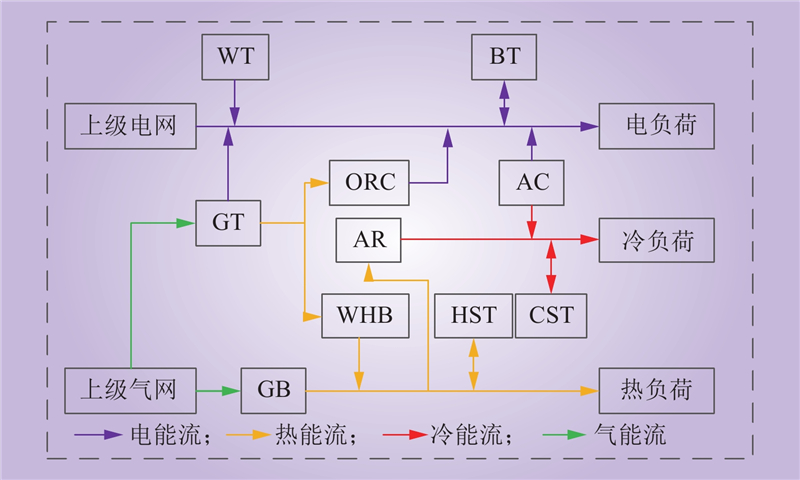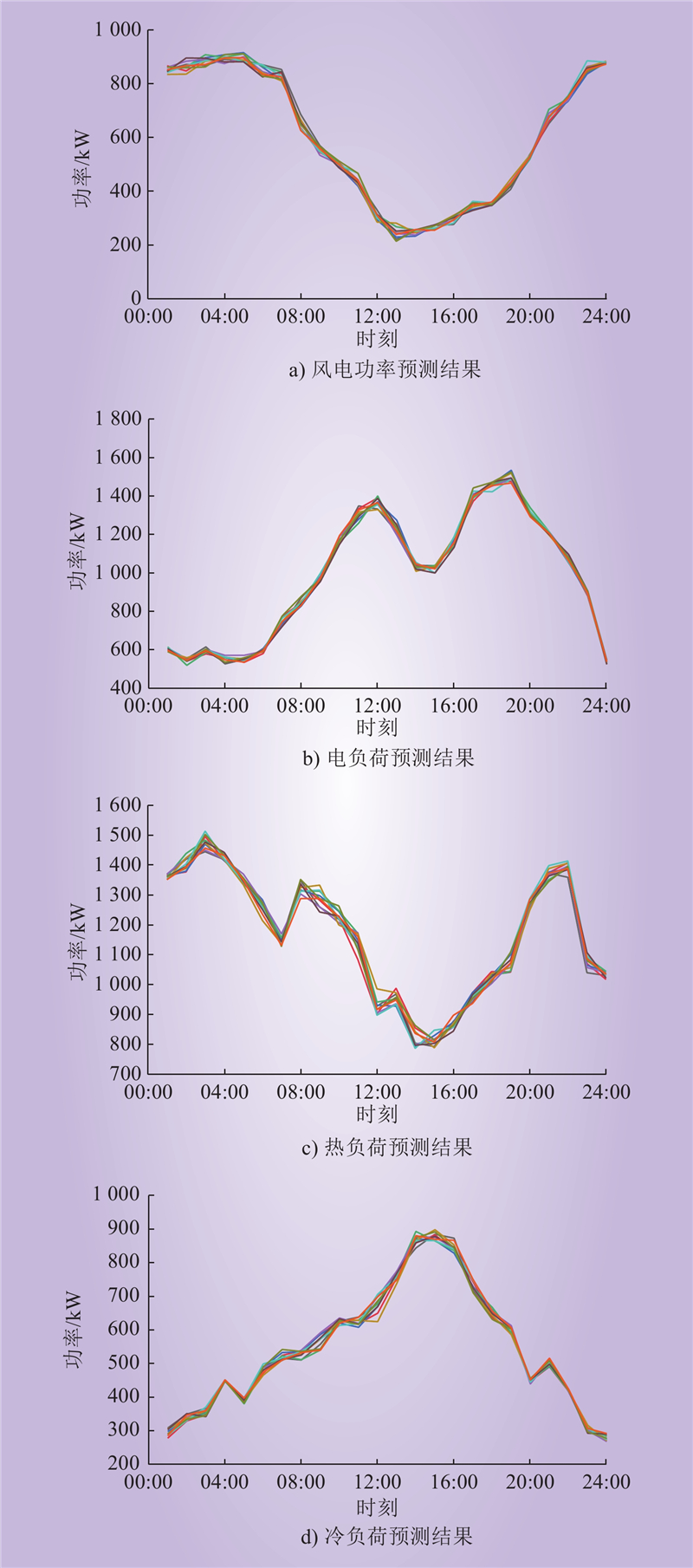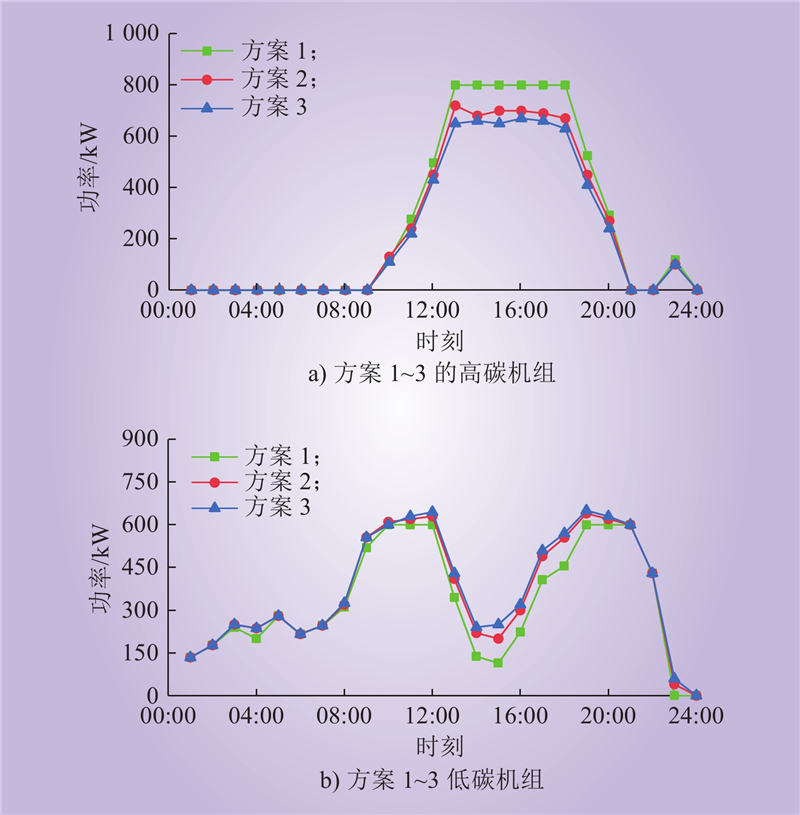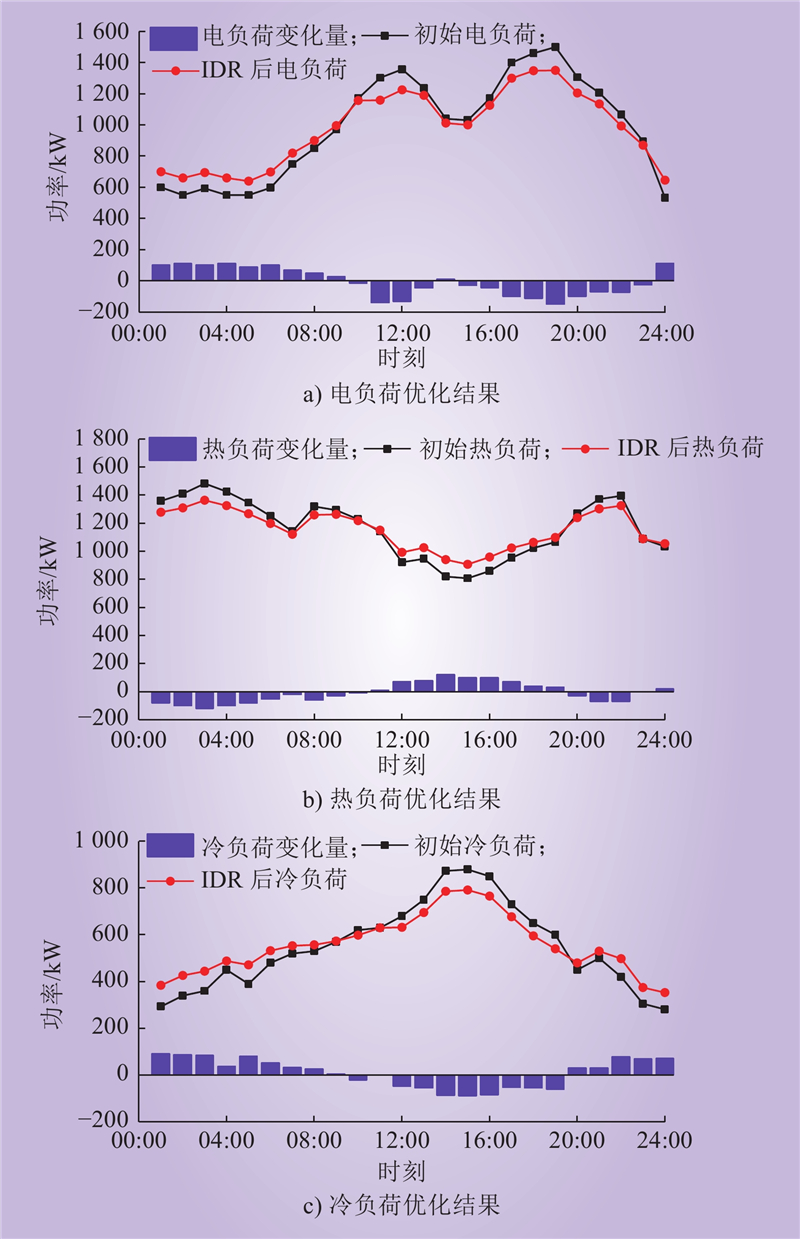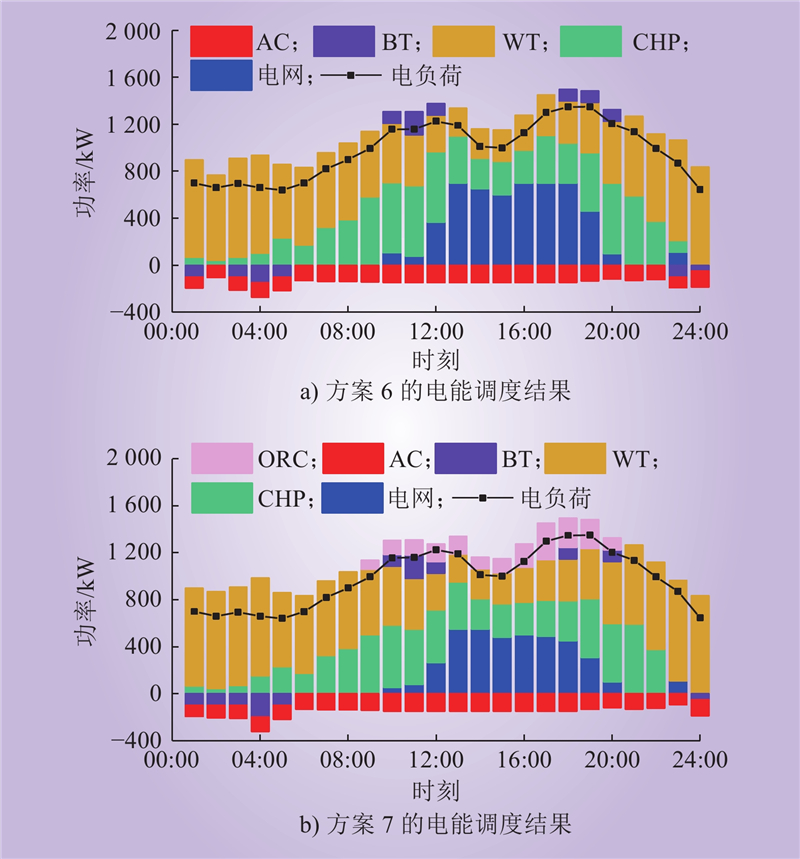| 1 |
陈瑜玮, 孙宏斌, 郭庆来. 综合能源系统分析的统一能路理论(五): 电–热–气耦合系统优化调度[J]. 中国电机工程学报, 2020, 40 (24): 7928- 7937.
|
|
CHEN Yuwei, SUN Hongbin, GUO Qinglai. Energy circuit theory of integrated energy system analysis(V): integrated electricity-heat-gas dispatch[J]. Proceedings of the CSEE, 2020, 40 (24): 7928- 7937.
|
| 2 |
李政, 陈思源, 董文娟, 等. 碳约束条件下电力行业低碳转型路径研究[J]. 中国电机工程学报, 2021, 41 (12): 3987- 4001.
|
|
LI Zheng, CHEN Siyuan, DONG Wenjuan, et al. Low carbon transition pathway of power sector under carbon emission constraints[J]. Proceedings of the CSEE, 2021, 41 (12): 3987- 4001.
|
| 3 |
EBRAHIMI-MOGHADAM A, JABARI MOGHADAM A, FARZANEH-GORD M, et al. Performance investigation of a novel hybrid system for simultaneous production of cooling, heating, and electricity[J]. Sustainable Energy Technologies and Assessments, 2021, 43: 100931.
|
| 4 |
黄景光, 熊华健, 李振兴, 等. 基于生命周期法和碳权交易的综合能源系统低碳经济调度[J]. 电测与仪表, 2022, 59 (3): 82- 91.
|
|
HUANG Jingguang, XIONG Huajian, LI Zhenxing, et al. Low-carbon economic dispatch of integrated energy system based on life cycle method and carbon trading[J]. Electrical Measurement & Instrumentation, 2022, 59 (3): 82- 91.
|
| 5 |
卫志农, 张思德, 孙国强, 等. 基于碳交易机制的电—气互联综合能源系统低碳经济运行[J]. 电力系统自动化, 2016, 40 (15): 9- 16.
DOI
|
|
WEI Zhinong, ZHANG Side, SUN Guoqiang, et al. Carbon trading based low-carbon economic operation for integrated electricity and natural gas energy system[J]. Automation of Electric Power Systems, 2016, 40 (15): 9- 16.
DOI
|
| 6 |
张晓辉, 刘小琰, 钟嘉庆. 考虑奖惩阶梯型碳交易和电-热转移负荷不确定性的综合能源系统规划[J]. 中国电机工程学报, 2020, 40 (19): 6132- 6142.
|
|
ZHANG Xiaohui, LIU Xiaoyan, ZHONG Jiaqing. Integrated energy system planning considering a reward and punishment ladder-type carbon trading and electric-thermal transfer load uncertainty[J]. Proceedings of the CSEE, 2020, 40 (19): 6132- 6142.
|
| 7 |
崔杨, 曾鹏, 仲悟之, 等. 考虑阶梯式碳交易的电-气-热综合能源系统低碳经济调度[J]. 电力自动化设备, 2021, 41 (3): 10- 17.
|
|
CUI Yang, ZENG Peng, ZHONG Wuzhi, et al. Low-carbon economic dispatch of electricity-gas-heat integrated energy system based on ladder-type carbon trading[J]. Electric Power Automation Equipment, 2021, 41 (3): 10- 17.
|
| 8 |
陈志, 胡志坚, 翁菖宏, 等. 基于阶梯碳交易机制的园区综合能源系统多阶段规划[J]. 电力自动化设备, 2021, 41 (9): 148- 155.
|
|
CHEN Zhi, HU Zhijian, WENG Changhong, et al. Multi-stage planning of park-level integrated energy system based on ladder-type carbon trading mechanism[J]. Electric Power Automation Equipment, 2021, 41 (9): 148- 155.
|
| 9 |
王瑞, 程杉, 汪业乔, 等. 基于多主体主从博弈的区域综合能源系统低碳经济优化调度[J]. 电力系统保护与控制, 2022, 50 (5): 12- 21.
|
|
WANG Rui, CHENG Shan, WANG Yeqiao, et al. Low-carbon and economic optimization of a regional integrated energy system based on a master-slave game with multiple stakeholders[J]. Power System Protection and Control, 2022, 50 (5): 12- 21.
|
| 10 |
董福贵, 时磊. 可再生能源配额制及绿色证书交易机制设计及仿真[J]. 电力系统自动化, 2019, 43 (12): 113- 121.
DOI
|
|
DONG Fugui, SHI Lei. Design and simulation of renewable portfolio standard and tradable green certificate mechanism[J]. Automation of Electric Power Systems, 2019, 43 (12): 113- 121.
DOI
|
| 11 |
CHEN C, ZHU Y, ZENG X T, et al. Analyzing the carbon mitigation potential of tradable green certificates based on a TGC-FFSRO model: a case study in the Beijing-Tianjin-Hebei region, China[J]. Science of the Total Environment, 2018, 630, 469- 486.
DOI
|
| 12 |
彭谦, 周晓洁, 杨睿. 国家绿色电力证书交易市场与省级日前电力市场协调均衡机制设计[J]. 电网技术, 2020, 44 (7): 2565- 2571.
|
|
PENG Qian, ZHOU Xiaojie, YANG Rui. Design of coordination and balance mechanism between national green power certificate trading market and provincial day-ahead power market[J]. Power System Technology, 2020, 44 (7): 2565- 2571.
|
| 13 |
曹雨微, 郭晓鹏, 董厚琦, 等. 计及消纳责任权重的区域综合能源系统运行优化研究[J]. 华北电力大学学报(自然科学版), 2022, 49 (3): 84- 95.
|
|
CAO Yuwei, GUO Xiaopeng, DONG Houqi, et al. Operation optimization of regional integrated energy system under responsibility of renewable energy consumption[J]. Journal of North China Electric Power University (Natural Science Edition), 2022, 49 (3): 84- 95.
|
| 14 |
刘晓军, 聂凡杰, 杨冬锋, 等. 碳捕集电厂-电转气联合运行模式下考虑绿证-碳交易机制的综合能源系统低碳经济调度[J]. 电网技术, 2023, 47 (6): 2207- 2217.
|
|
LIU Xiaojun, LIE Fanjie, YANG Dongfeng, et al. Low carbon economic dispatch of integrated energy systems considering green certificates-carbon trading mechanism under CCPP-P2G joint operation model[J]. Power System Technology, 2023, 47 (6): 2207- 2217.
|
| 15 |
徐筝, 孙宏斌, 郭庆来. 综合需求响应研究综述及展望[J]. 中国电机工程学报, 2018, 38 (24): 7194- 7205, 7446.
|
|
XU Zheng, SUN Hongbin, GUO Qinglai. Review and prospect of integrated demand response[J]. Proceedings of the CSEE, 2018, 38 (24): 7194- 7205, 7446.
|
| 16 |
张涛, 郭玥彤, 李逸鸿, 等. 计及电气热综合需求响应的区域综合能源系统优化调度[J]. 电力系统保护与控制, 2021, 49 (1): 52- 61.
|
|
ZHANG Tao, GUO Yuetong, LI Yihong, et al. Optimization scheduling of regional integrated energy systems based on electric-thermal-gas integrated demand response[J]. Power System Protection and Control, 2021, 49 (1): 52- 61.
|
| 17 |
邱彬, 宋绍鑫, 王凯, 等. 计及需求响应和阶梯型碳交易机制的区域综合能源系统优化运行[J]. 电力系统及其自动化学报, 2022, 34 (5): 87- 95, 101.
|
|
QIU Bin, SONG Shaoxin, WANG Kai, et al. Optimal operation of regional integrated energy system considering demand response and ladder-type carbon trading mechanism[J]. Proceedings of the CSU-EPSA, 2022, 34 (5): 87- 95, 101.
|
| 18 |
李鹏, 吴迪凡, 李雨薇, 等. 基于综合需求响应和主从博弈的多微网综合能源系统优化调度策略[J]. 中国电机工程学报, 2021, 41 (4): 1307- 1321, 1538.
|
|
LI Peng, WU Difan, LI Yuwei, et al. Optimal dispatch of multi-microgrids integrated energy system based on integrated demand response and stackelberg game[J]. Proceedings of the CSEE, 2021, 41 (4): 1307- 1321, 1538.
|
| 19 |
尚楠, 陈政, 卢治霖, 等. 电力市场、碳市场及绿证市场互动机理及协调机制[J]. 电网技术, 2023, 47 (1): 142- 154.
|
|
SHANG Nan, CHEN Zheng, LU Zhilin, et al. Interaction principle and cohesive mechanism between electricity market, carbon market and green power certificate market[J]. Power System Technology, 2023, 47 (1): 142- 154.
|
| 20 |
孟宇翔, 马刚, 李豪, 等. 基于绿证-阶梯式碳交易交互的源荷互补调度优化[J]. 中国电力, 2023, 56 (9): 149- 156.
|
|
MENG Yuxiang, MA Gang, LI Hao, et al. Optimal scheduling of source-load complementation based on green certificate-step carbon trading interaction[J]. Electric Power, 2023, 56 (9): 149- 156.
|
| 21 |
王小飞, 任洪波, 吴琼, 等. 考虑中长期碳减排约束的区域综合能源系统多阶段动态规划[J]. 中国电力, 2023, 56 (11): 185- 196.
|
|
WANG Xiaofei, REN Hongbo, WU Qiong, et al. Multi-stage dynamic plan of regional integrated energy system considering medium and long-term carbon emission reduction constraints[J]. Electric Power, 2023, 56 (11): 185- 196.
|
| 22 |
郭宴秀, 苏建军, 刘洋, 等. 考虑电热交互和共享储能的多综合能源系统运行优化[J]. 中国电力, 2023, 56 (4): 138- 145.
|
|
GUO Yanxiu, SU Jianjun, LIU Yang, et al. Optimal operation of multiple integrated energy systems considering power and heat interaction and shared energy storage system[J]. Electric Power, 2023, 56 (4): 138- 145.
|
| 23 |
田亮, 谢云磊, 周桂平, 等. 基于两阶段随机规划的热电机组深调峰辅助服务竞价策略[J]. 电网技术, 2019, 43 (8): 2789- 2798.
|
|
TIAN Liang, XIE Yunlei, ZHOU Guiping, et al. Deep peak regulation ancillary service bidding strategy for CHP units based on two-stage stochastic programming[J]. Power System Technology, 2019, 43 (8): 2789- 2798.
|
| 24 |
刘光宇, 韩东升, 刘超杰, 等. 考虑双重需求响应及阶梯型碳交易的综合能源系统双时间尺度优化调度[J]. 电力自动化设备, 2023, 43 (5): 218- 225.
|
|
LIU Guangyu, HAN Dongsheng, LIU Chaojie, et al. Dual time scale optimal scheduling of integrated energy system considering dual demand response and stepped carbon trading[J]. Electric Power Automation Equipment, 2023, 43 (5): 218- 225.
|


